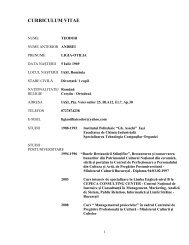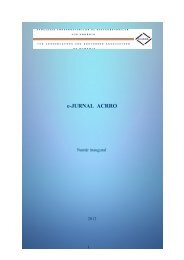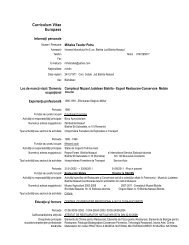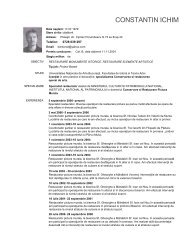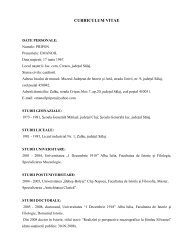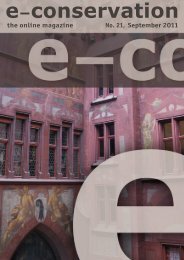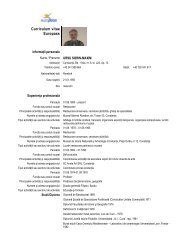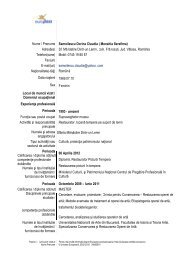e-conservation the online Magazine 16, oct 2010.pdf
e-conservation the online Magazine 16, oct 2010.pdf
e-conservation the online Magazine 16, oct 2010.pdf
Create successful ePaper yourself
Turn your PDF publications into a flip-book with our unique Google optimized e-Paper software.
IDENTIFICATION OF IVORY BOOK COVERS<br />
is present, and any o<strong>the</strong>r colour or no colour change<br />
indicates cellulose nitrate is not present [6]. This<br />
test would have been successful in determining<br />
that <strong>the</strong> brown book was in fact cellulose nitrate,<br />
but not aid in identifying <strong>the</strong> o<strong>the</strong>r books.<br />
Scientific Analysis<br />
Finally, a conclusive test was administered. Scott<br />
Williams, Senior Conservation Scientist at <strong>the</strong> Canadian<br />
Conservation Institute (CCI), performed<br />
Fourier Transform Near Infrared Reflectance Spectroscopy<br />
testing on <strong>the</strong> four books as well as an<br />
elephant ivory sample [7] (Figure 4). A LabSpec<br />
Pro NIR spectrometer (Analytical Spectral Devices)<br />
with a bifurcated fibre optic reflection probe was<br />
used to ga<strong>the</strong>r spectra from each material [7]. The<br />
characterization of <strong>the</strong> material is determined by<br />
its molecular interaction with <strong>the</strong> infrared radiation<br />
which originates a characteristic spectrum<br />
[8].The spectra were <strong>the</strong>n arranged on graphs in<br />
comparison with <strong>the</strong> spectra of reference materials<br />
of known compositions [7].<br />
From <strong>the</strong> ga<strong>the</strong>red spectra, it is evident that Book<br />
1, Book 2 and Book 3 are each pure elephant ivory<br />
(Figure 5). Every spectrum of each book (except<br />
Book 4) is very closely related to <strong>the</strong> sample spectra<br />
of a known elephant tusk. However, Book 4 did<br />
not closely compare to <strong>the</strong> elephant tusk sample<br />
at all. However, it did relate closely to sample spectra<br />
from cellulose nitrate (Figure 6) Therefore, it<br />
was concluded with certainty that Book 1, Book 2,<br />
and Book 3 are made of true elephant ivory, and<br />
Book 4 is made of cellulose nitrate.<br />
History of Ivory Use<br />
Early man utilized as much of mammoths as possible,<br />
beginning <strong>the</strong> tradition of ivory use in both<br />
utilitarian and decorative objects [3]. Early uses<br />
included weaponry, musical instruments, religious<br />
pieces, personal artifacts, decorative items, artistic<br />
pieces, and parts for games [3]. Ivory became associated<br />
with gold and silver as a luxurious commodity,<br />
used especially for decorating objects of<br />
value [1].<br />
Figure 5. Spectra of Book 1, Book 2, and Book 3 compared to sample ivory (red) (Graph: Scott Williams).<br />
Covers and embellishments for all books<br />
have spectra similar to elephant ivory<br />
(red trace).<br />
e-<strong>conservation</strong><br />
27



